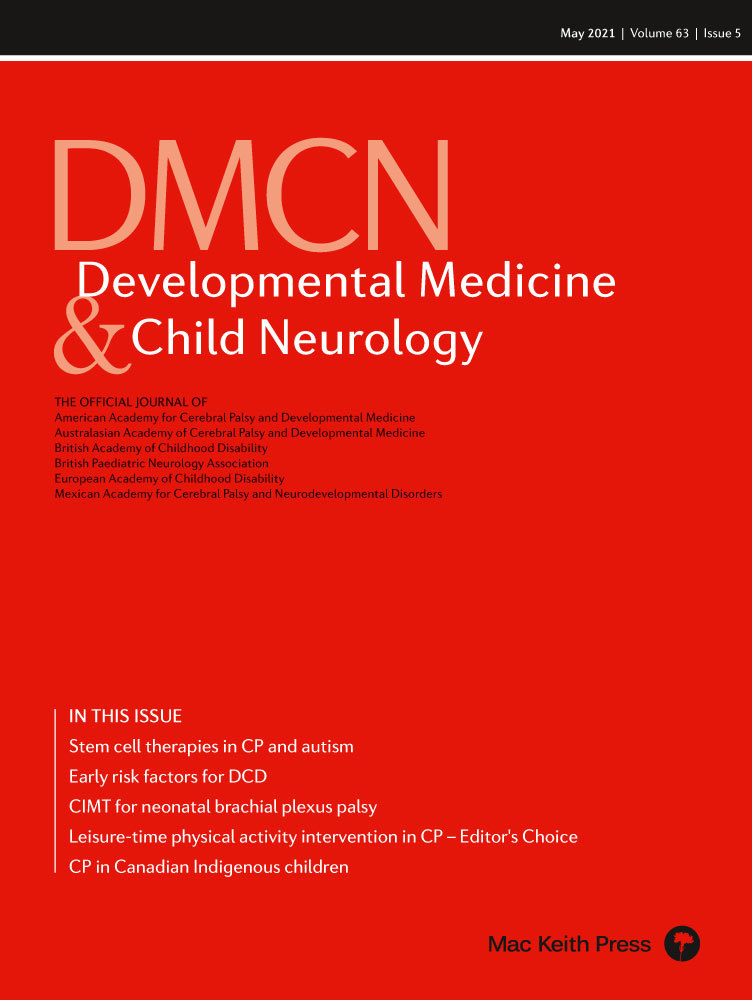Causal inference in developmental medicine and neurology
Abstract
This commentary is on the original article by Burgess et al. on pages 576–583 of this issue.
Arguably, in most statistical association tests, we as researchers and clinicians are ultimately interested in making causal inference. While statistical tests allow us to describe associations between two or more variables, the attempts to control for confounding and to adjust for the effect of other variables are all part of an agenda to infer causal effects. This has motivated developments in the field of causal inference, which has grown from within computer science, econometrics, biostatistics, and epidemiology.1, 2 The developed theory provides a formal language to talk about causation. With this language, there exist exciting approaches: (1) to study different causal effects of interest; (2) to make causal inference from observational data;3 (3) to integrate causal inference in prediction modeling;4 and (4) to describe how and when one can hope to learn from observational data whether a variable X causally affects a variable Y or the other way around.2 These methods, among others, are gaining popularity in the field of developmental medicine and pediatric neurology.3
Burgess et al.5 investigate the relationship between bimanual performance and self-care in children with cerebral palsy (CP). The data shows evidence for an association, which is suggested to be stronger in children with bilateral CP compared to unilateral CP. The results from this cross-sectional analysis of 74 children aged 8 to 12 years can help in developing interventions that improve self-care. In fact, the authors aimed to provide evidence for a causal effect of bimanual performance on self-care by using concepts from causal inference – even though this was not explicitly stated. I commend Burgess et al. for further leading the way and integrating concepts from causal inference into their study. They use the graphical representation of causal effects provided by directed acyclic graphs (DAGs) to lay out their assumptions on the effects between self-care, bimanual performance, and all further relevant variables. This requires clinical expert knowledge, which the authors support by references, in order to identify all relevant variables and their relations.5 Constructing such a DAG is very helpful and strongly recommended for every empirical study. First, it makes the implicit assumptions that are made in every statistical analysis explicit. Second, by doing so, existing causal graph theory and statistical software can be applied, for example, to derive the minimal set of adjustment variables that is necessary to control for confounding. Burgess et al. use the free DAGitty software tool (http://www.dagitty.net/) and conclude that in order to estimate the total effect of bimanual performance on self-care (i.e. the direct effect of bimanual performance on self-care as well as the indirect effect through motivation), an adjustment for age, cognition, behaviour self-regulation, and attention span is necessary.
Causal inference provides further tools to account for confounding going beyond the analyses performed in Burgess et al. This includes strategies to account for confounders that have not been measured. Also, selection biases arising, for example, from the recruitment process of the study sample can be specified and modeled in the analysis. Finally, including further variables in the DAG such as genetic markers can strengthen the evidence of a causal effect by using the Mendelian randomization approach.2 In summary, DAGs and other tools from causal inference are important for every empirical research study, including the field of developmental medicine and child neurology. With their use, the risk of bias and confounding can be decreased, and the validity of the research and reproducibility can be increased.




